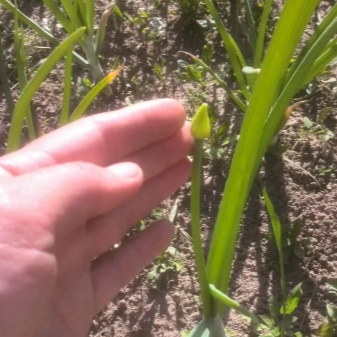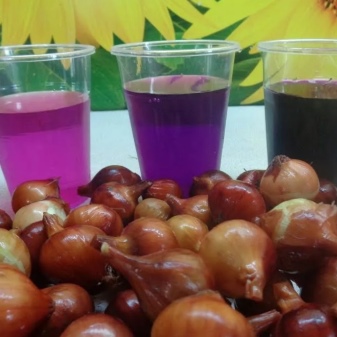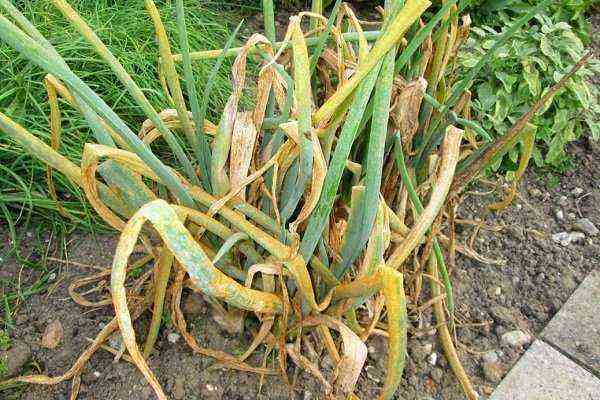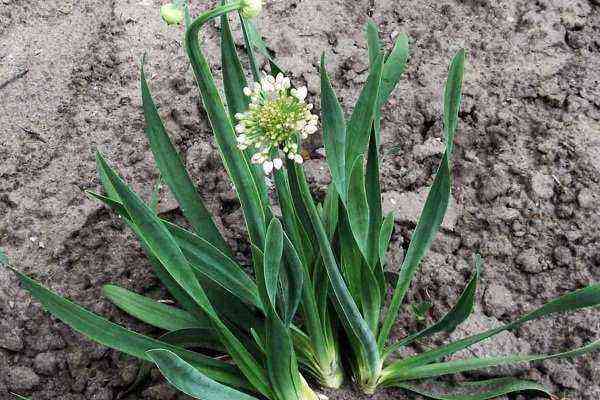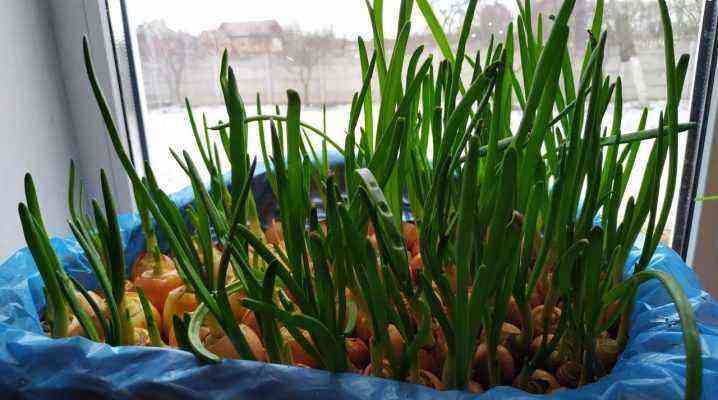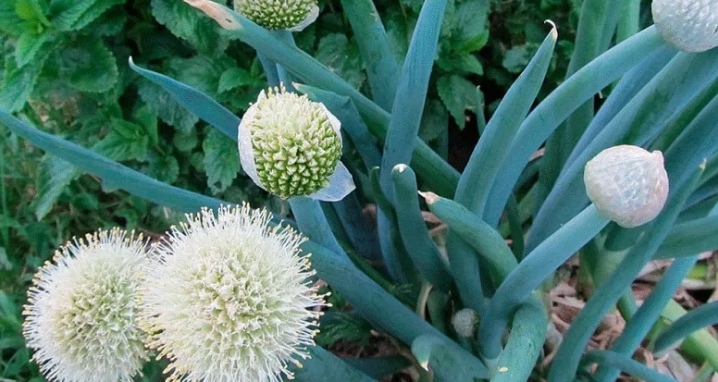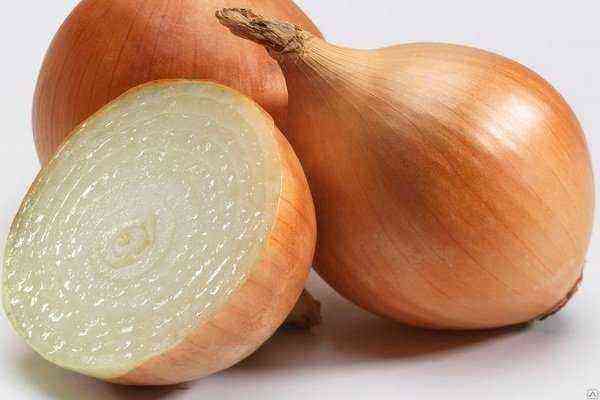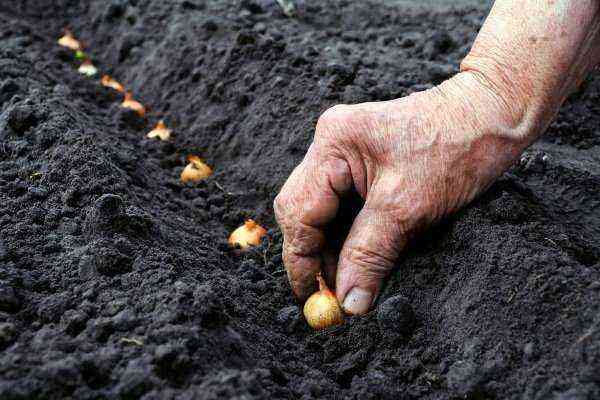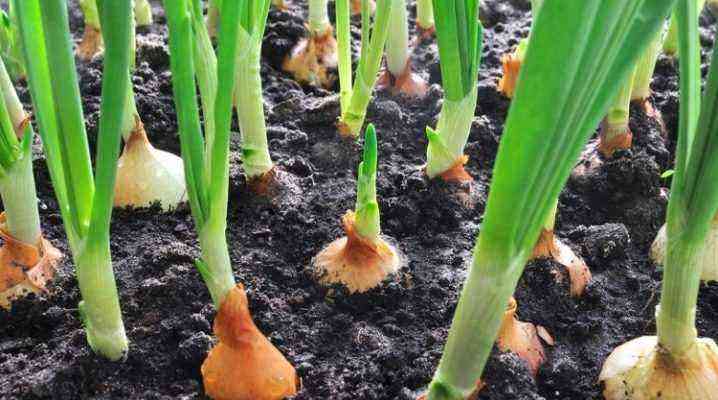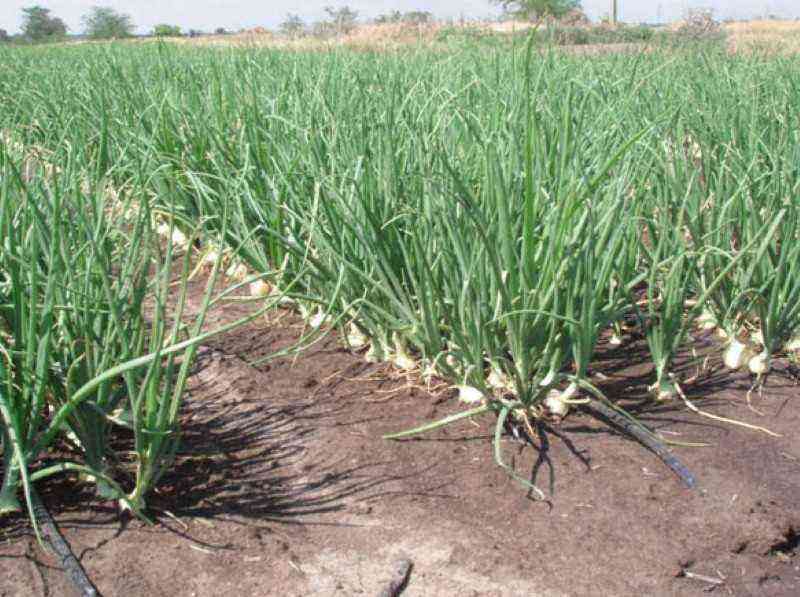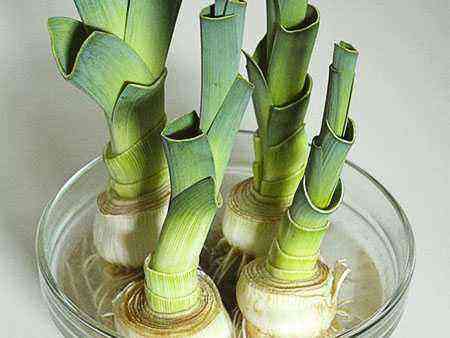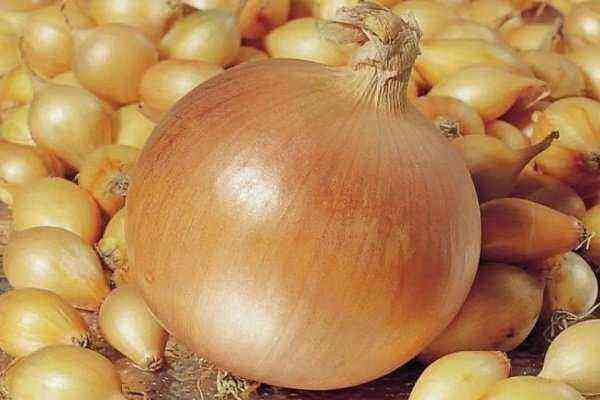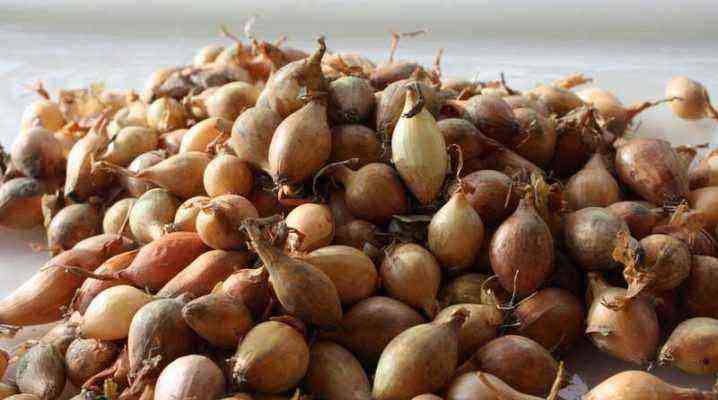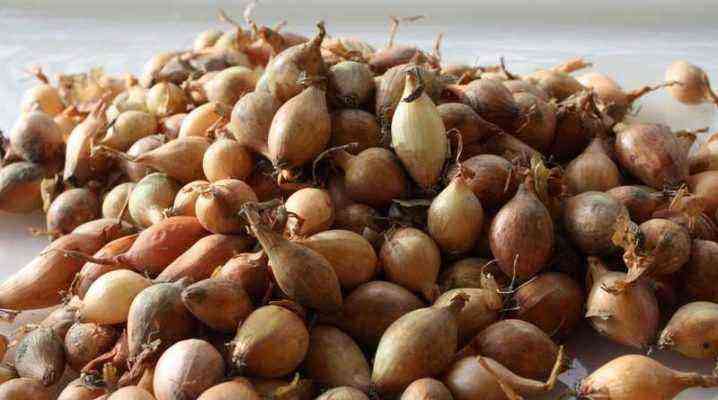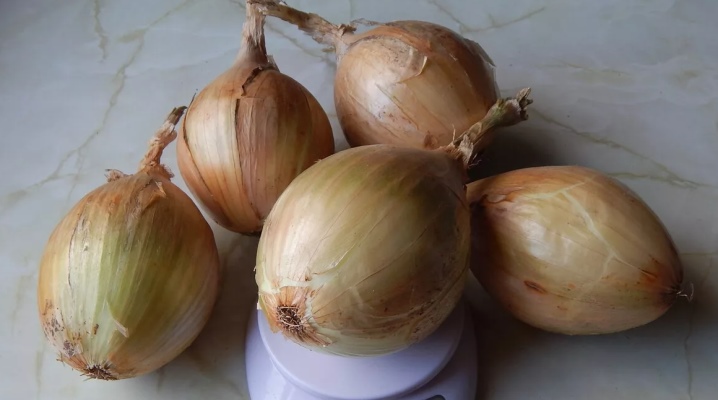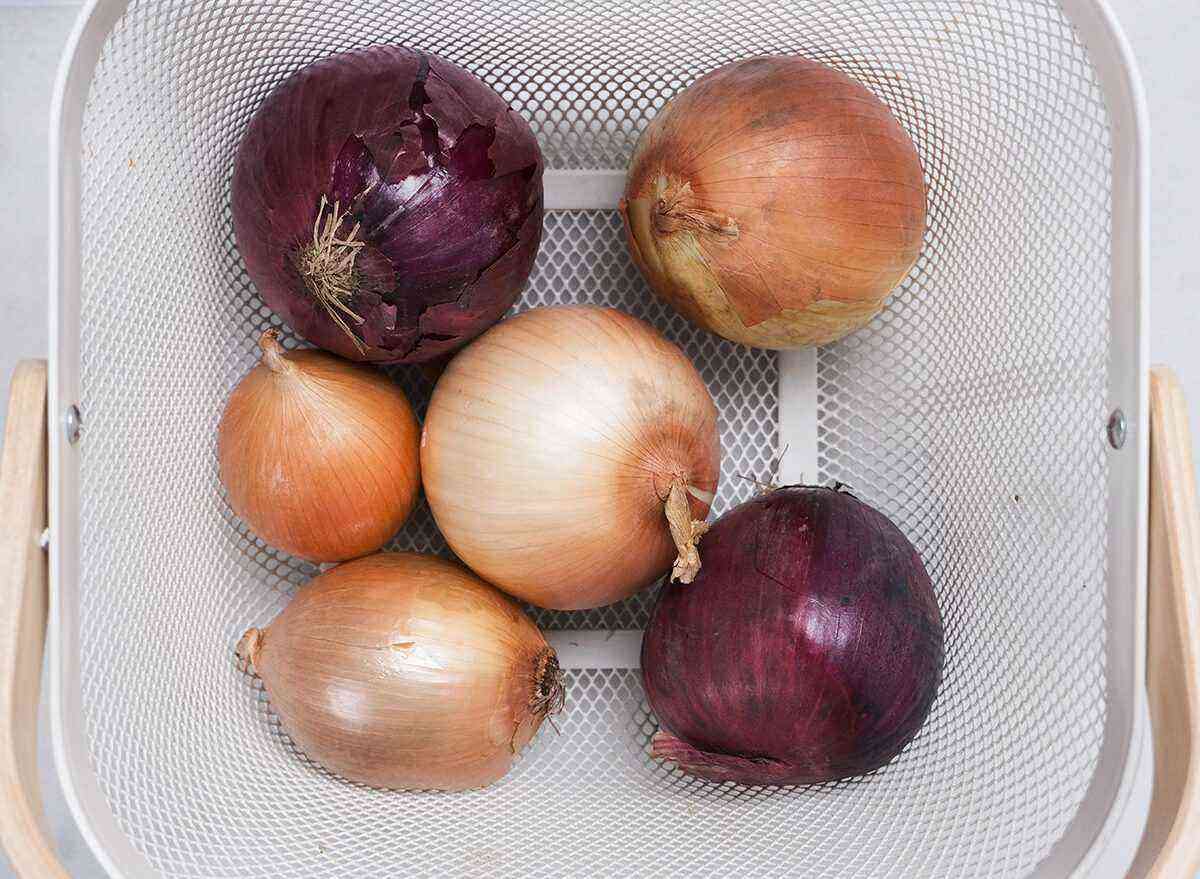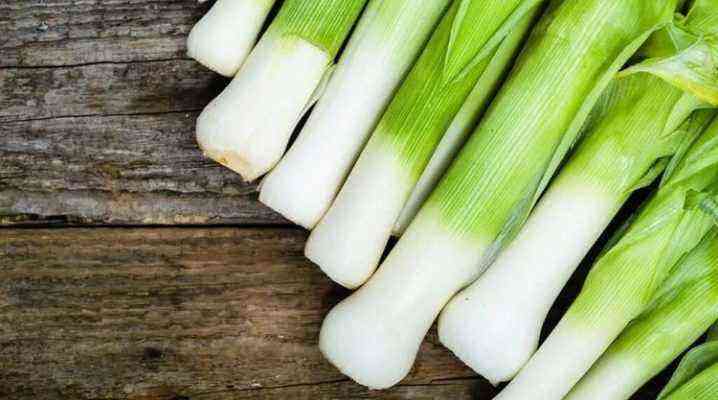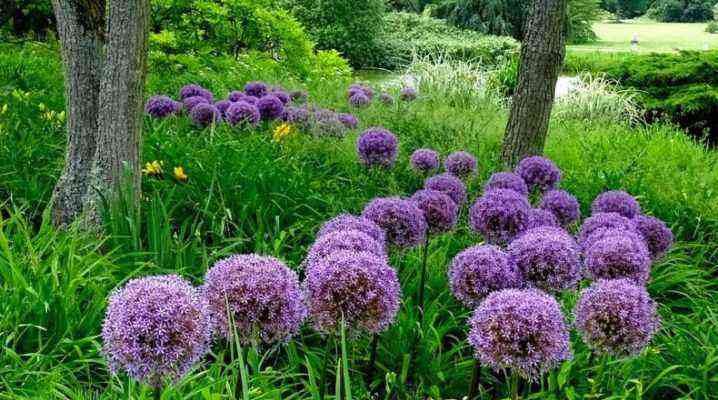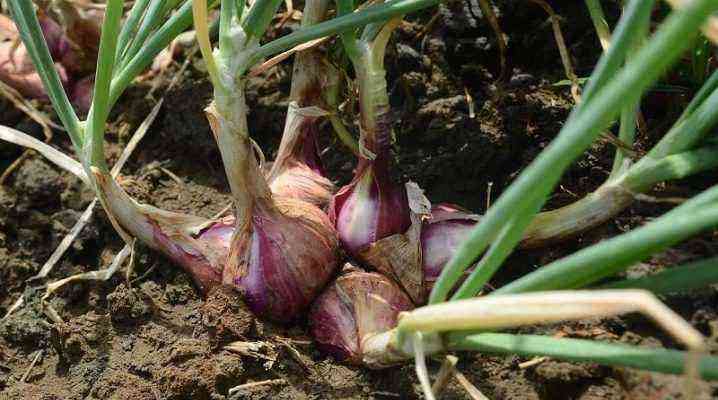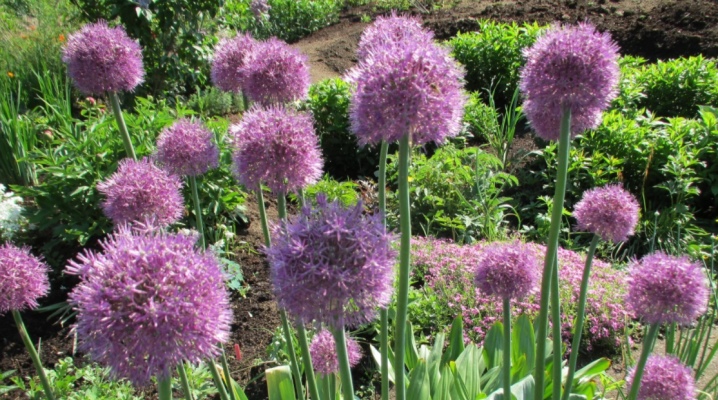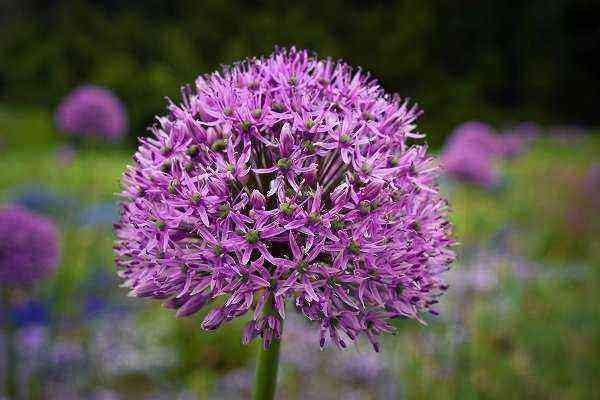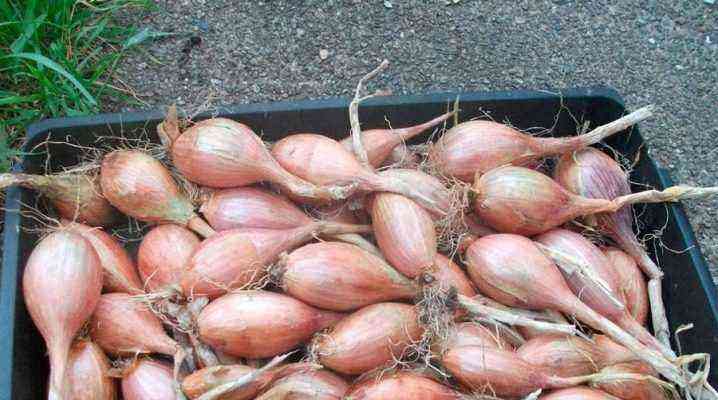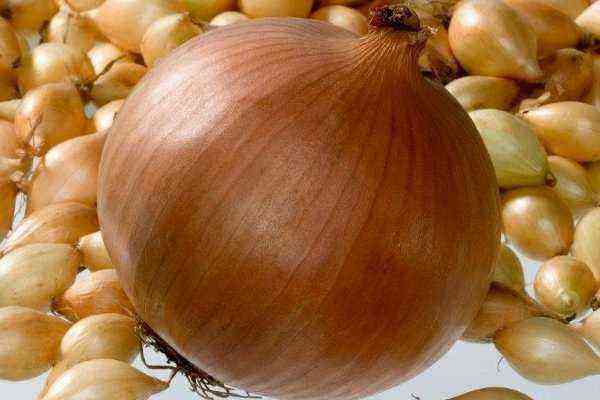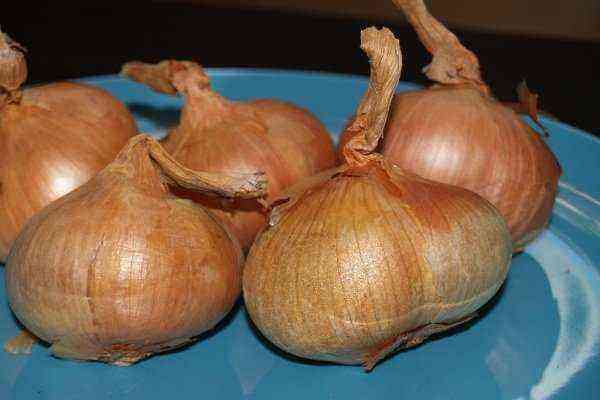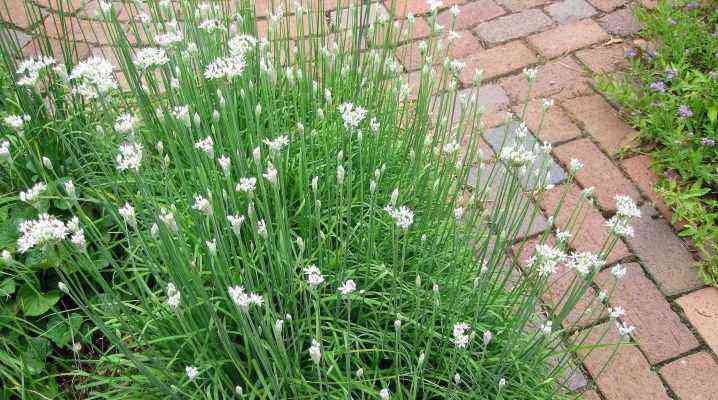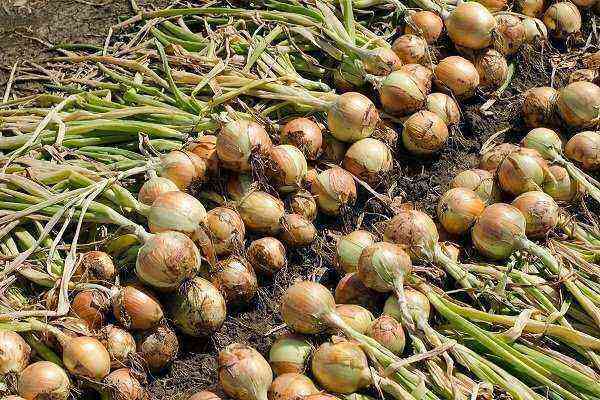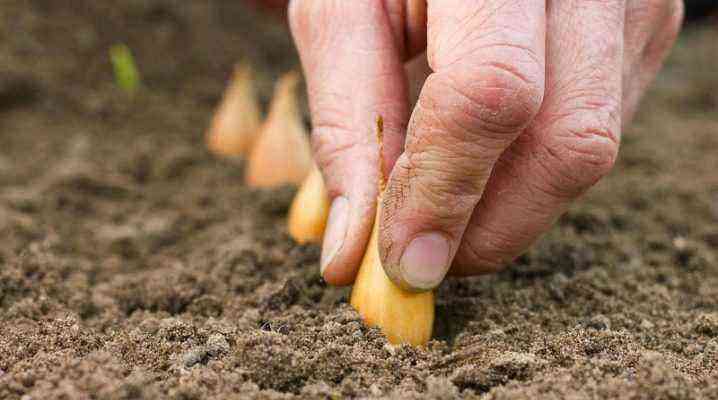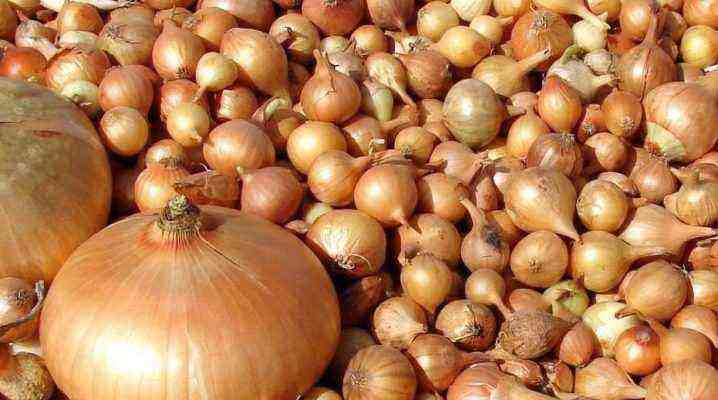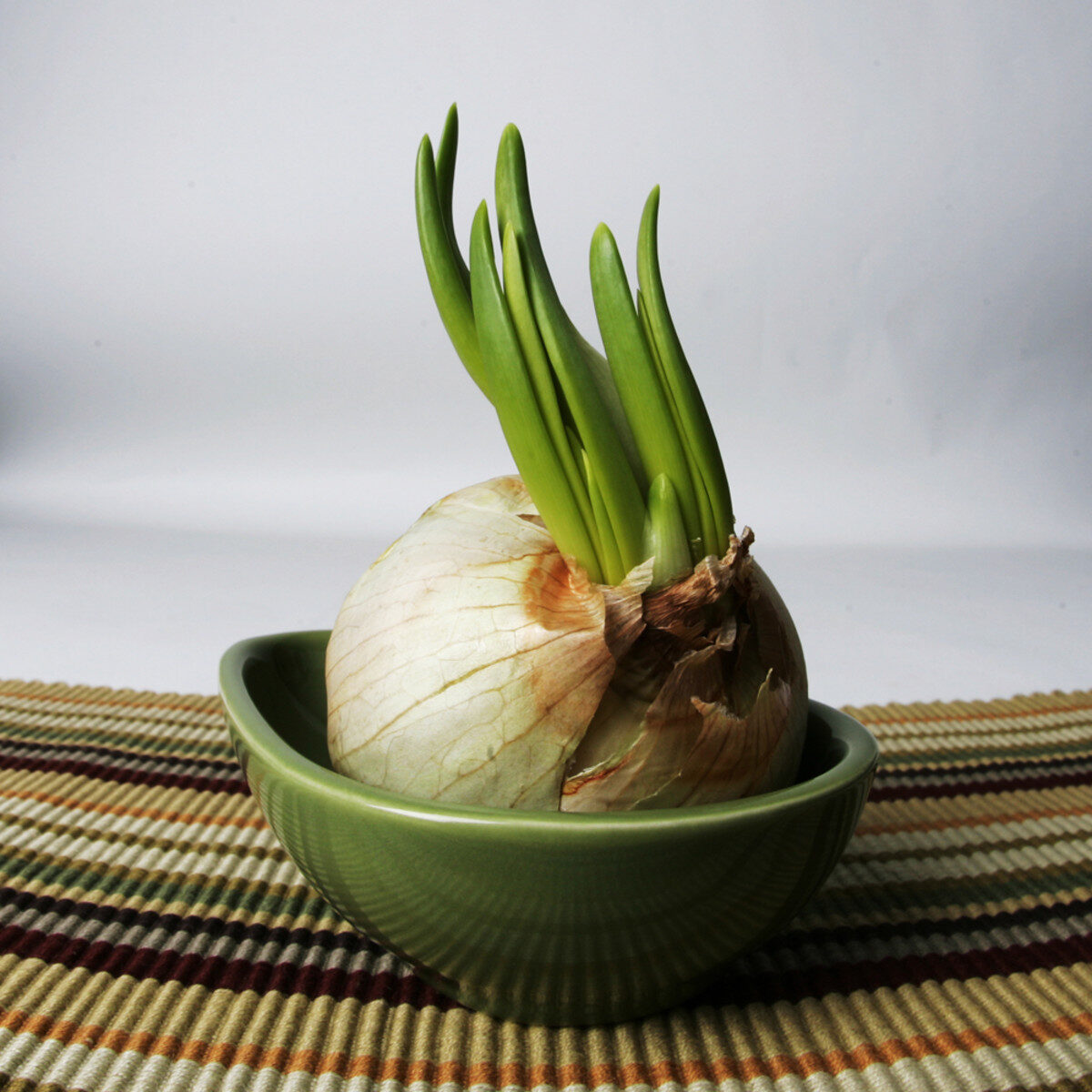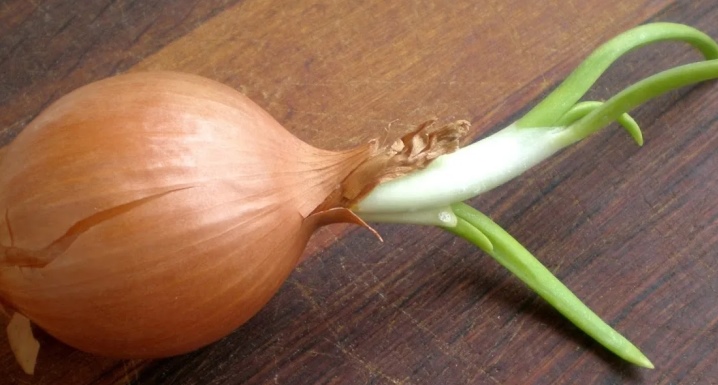
Many summer residents keep onions at home until spring, in order to plant them in the beds with the onset of heat. However, often sevok begins to germinate. You can read about the reasons for this phenomenon and what the actions of gardeners should be in the article.
Reasons for sprouting
Sprouted sevok is a fairly common occurrence that scares novice gardeners. The bulbs, which are supposed to be at rest, awaken, and therefore begin to grow. This can happen for several reasons. The most common is the onset of spring. Nothing can be done here, the onion will sprout, because it is so laid down by nature. However, he can sprout even if the winter is too long.
The second reason is the storage of vegetables in a damp and poorly ventilated room. In such conditions, the seedlings may well begin to germinate long before planting. And if its neck also contains moisture (for example, the material was initially stored incorrectly), then germination cannot be completely avoided.
Sprouted bulbs should be carefully examined. If excessive moisture has led not only to sprouts, but also to mold, such specimens should be discarded immediately. Planting them or hoping for a miracle, keeping them further, is inappropriate. To determine that the onion is moldy, you can simply squeeze it slightly. The vegetable will be soft, unpleasant to the touch, after compression a putrefactive odor will appear.
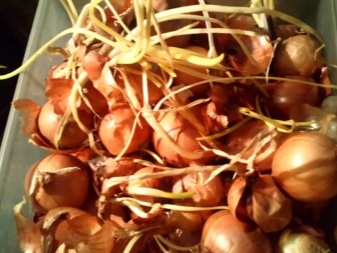
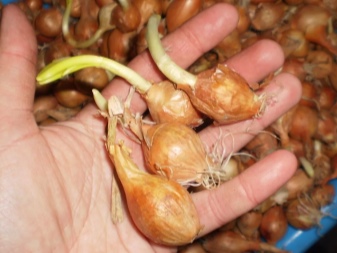
How to pause a process?
First of all, gardeners should learn about what to do so that the sevok does not begin to germinate at all. All you need is to organize the storage area correctly. This should be a room with a temperature regime of 18 to 24 degrees Celsius. Permissible humidity ranges from 50-70 percent, if it is more, the process of decay will start. So that the onion does not dry out, you should take the husk from the usual onion and sprinkle the sevok with it. In addition, it is worth putting buckets of ash indoors. To ensure the same air circulation will allow only adjusted ventilation.
If the sevok has already begun to germinate, nothing can be done about it. It is impossible to stop the already started growth, the only option is to germinate further. For this purpose, you need to use special containers for planting onions or egg containers, in which the bottoms are cut off where the eggs were. Next, the containers are placed on pallets and filled with a little water.
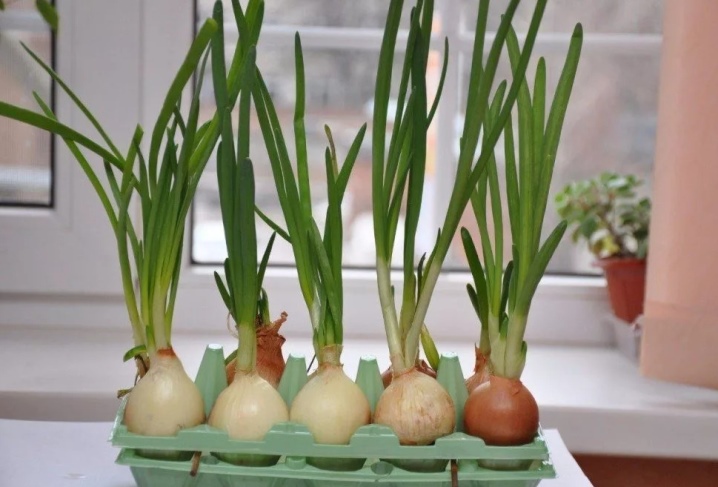
If this is a special container, it will be impossible to make a mistake with the amount of liquid: there is a level mark there. Then the onions are immersed in the holes, but so that only the roots are in the water. Otherwise, the vegetable will rot in a couple of days. Sprouted onions do not need to be fed with anything. The only thing is that you have to change the water every day. Thus, it will turn out to get at least feathers so as not to throw away raw materials. They will be even more juicy if you saturate the water with oxygen using an aerator from the aquarium.
You can also sprout onions if you use plastic canisters from under the water. The bottles are filled with wet soil, then many round holes are cut into them. Bulbs are inserted there so that the sprouts are on the outside. Bottles are placed on the windowsill and maintain the desired humidity in them. Thanks to this method, it is possible to save heavily germinated bulbs by using them as fresh herbs.

Is it possible to plant and how to do it?
If the onion began to sprout, this is not a reason to panic. After all, some specimens can be planted in the ground, like a standard seed without a sprout. However, this may not always be possible.
- A seed onion that has just begun to germinate has every chance of growing into a healthy and useful plant. If early spring has come, then you will have to carry out an unplanned landing in the ground until the sprouts become too long.
- In the presence of a large sprout, onion culture cannot be obtained. However, you can always plant such onions on greens. Before planting in the ground, the sprout is removed from the vegetable.
- If the sprout is excessively large and at the same time the bulb itself has dried up, it is absolutely useless to plant it in open ground. Such vegetables will not produce a crop.
You can plant bulbs both at home and in the garden. Let’s consider both options.

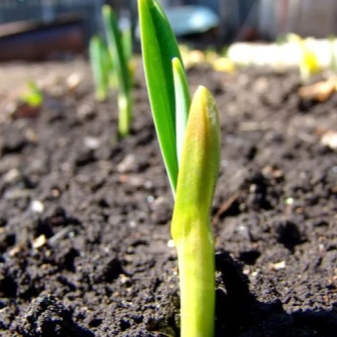
Home-grown
First of all, a suitable container is selected and holes are made on its bottom to drain water. Then drainage is placed at the bottom (expanded clay, broken brick, small pebbles can be used) with a layer of 2 centimeters. The disinfected substrate is poured into a container. If this is soil from the store, then, as a rule, it is not disinfected.
The bulbs are sorted. The husks are removed from them, and then checked for rot and mold. Damaged specimens are subject to rejection.
The next step is landing. Vegetables are placed in the ground, very closely, because the onion will not grow in the soil, but, on the contrary, will dry (this happens if the vegetables are planted out of season). Planted bulbs are covered with earth, but a third of them should rise above the ground.
To keep the greens juicy, containers with bulbs are taken out for 7 days in a cool place with low light. After this time, they are placed on warm windowsills. The temperature in the room should not be below +20 degrees. If the sun shines strongly, the containers should be glued around the perimeter with foil.
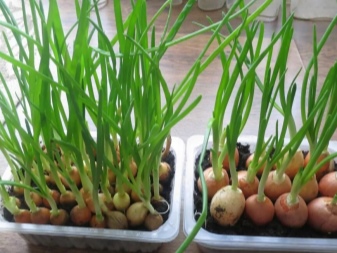
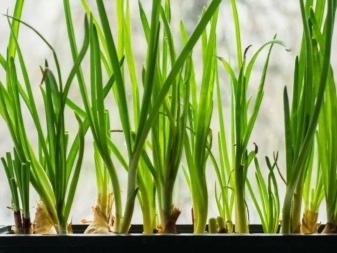
Watering should not be frequent. Onions do not need top dressing, but the appearance of greenery can be accelerated if plantings are shed once every 14 days with a solution of wood ash. For a liter of water, you need 5 grams of the substance.
Landing in open ground
First of all, the onion is germinated a little by soaking its roots in liquid. It will be useful to add root growth stimulants to the water. The depth of the beds in the garden should be at least 5 centimeters, since the bulb should go deep into the ground by 3 cm. The distance between the bulbs is 10 cm, and in the aisle it will be 25 cm. because this way the plant XNUMX% dies.
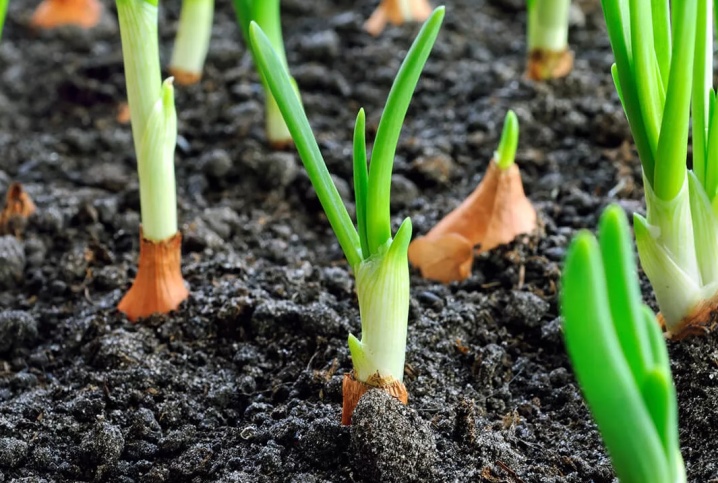
Useful Tips
Finally, let’s look at some good tips from experienced gardeners.
- If the goal is to grow an onion vegetable, abundant greenery should not be allowed. It will draw out all the useful substances, and the turnip simply will not ripen. Therefore, the feathers must be removed. It is worth considering: if the pen is cut off, then after a couple of days it will recover and will be the same as before removal. But if you remove it with scissors, then it will not grow back.
- When growing onions on a turnip, it should not be allowed to shoot arrows. The following must be done: the bulbs are placed in cheesecloth, tied and dipped in hot (85-90 degrees) water for a couple of seconds. Then the vegetables are immediately immersed in cold water. They are carefully dried and then planted.
- If the onion has begun to sprout, it may rot after planting. To prevent this from happening, you need to make a dark pink manganese solution. Seeds are placed there for 120 minutes. Then they are washed in cool water, dried and planted in a garden.
